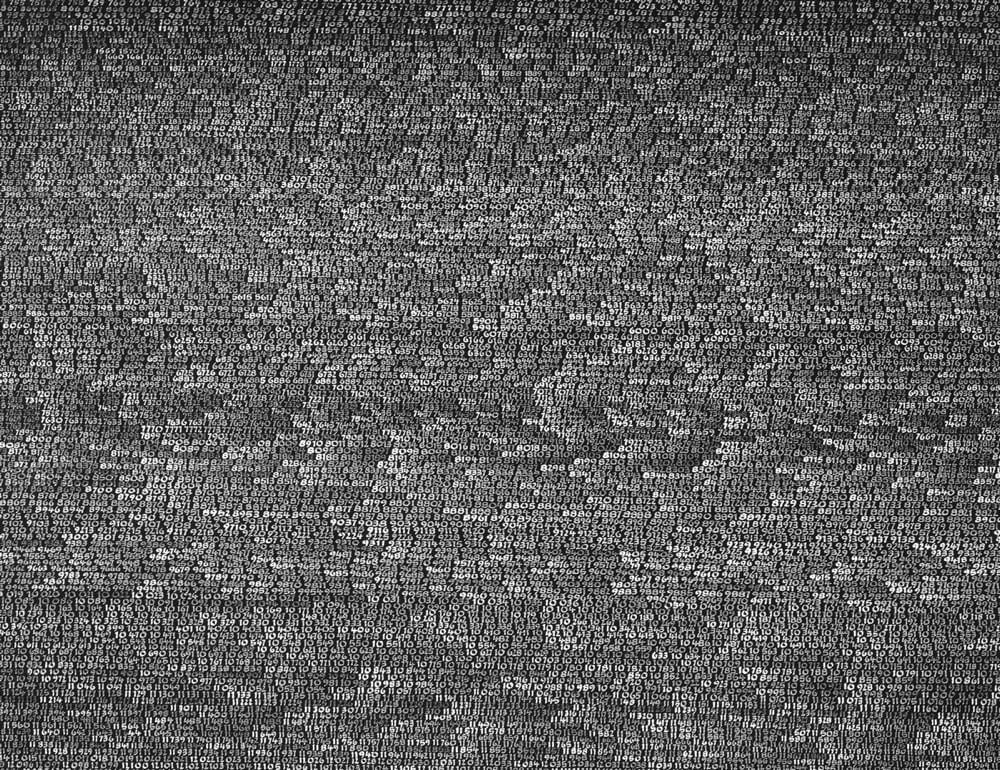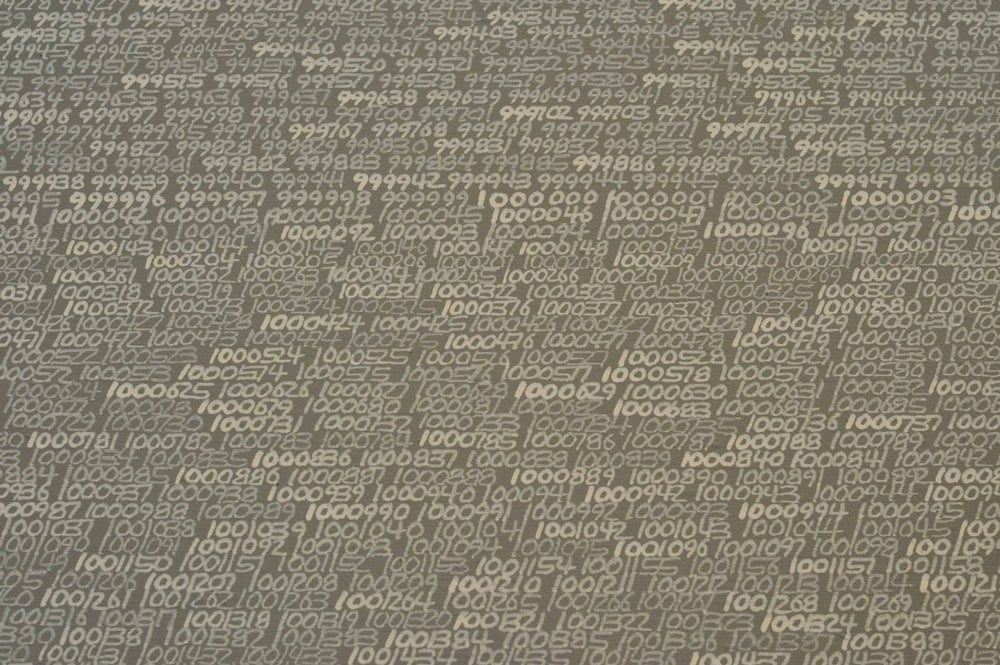Painting Infinity
In 1965, French-born Polish painter Roman Opalka began work on his series of paintings OPALKA 1965/1 - ∞. Starting in the top-left corner of a canvas, he painted the number “1”, then “2”, then “3”, and so on, continuing until the canvas was full of consecutive whole numbers. At the top of the next canvas, he picked up where he’d left off, and then just kept going from canvas to canvas. By 1970, Opalka abandoned working on anything else and devoted himself solely to filling canvases with numbers.


He pursued this culmination on a daily basis, eight hours a day, until the process of painting led him to “white/white” — that is, white numbers on a canvas with a background painted white, the same as the numbers. After three years (1968, possibly 1969), Opalka began to add 1% white pigment to the black background. Gradually, over time, as more paintings were painted, the black surface would become gray. As he continued to count and to paint five, six, and seven digit numbers, he discreetly added 1% white to each canvas, thus making the surfaces appear increasingly lighter. In the late 1970s he declared that the background of his canvases would eventually appear white, the same white used to paint the numerals that would finally dissolve into the surface, embody the surface. Ultimately, there would be no distinction between the white numerals and the white surface; they would culminate as a form of blankness, possibly transcendent, as the numerals grew invisible within the prospect of infinity, the Samadhi or highest level of meditation.
According to Opalka’s website, the last number he painted was 5607249, in white paint, invisible on a white canvas. (via moss & fog)





Stay Connected